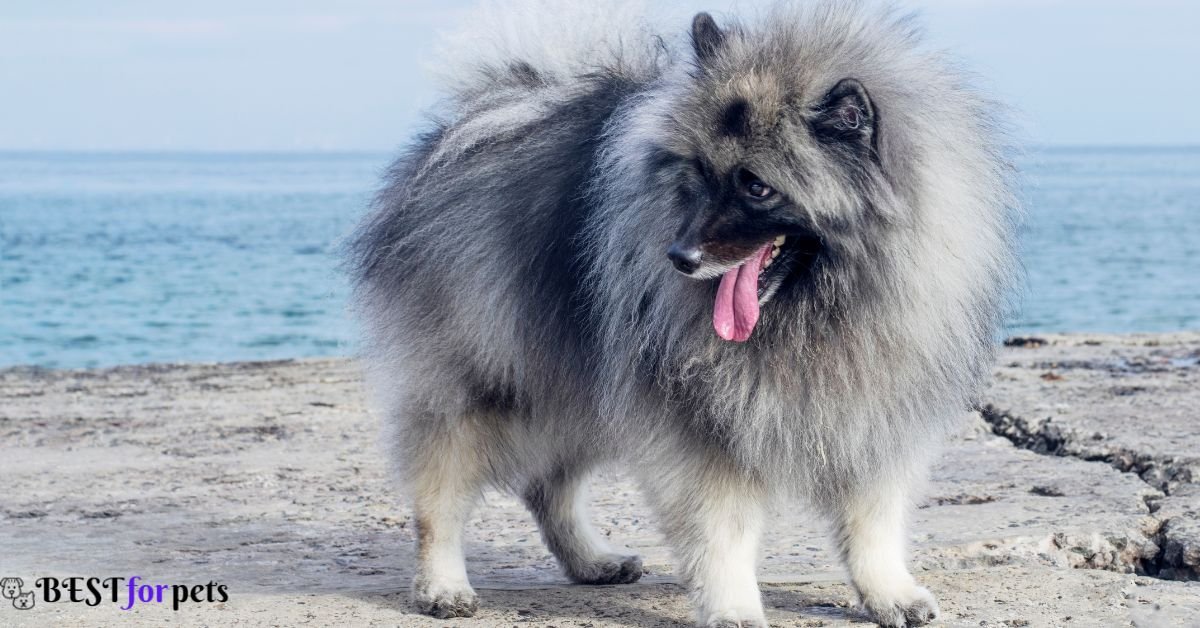//Prices//
Keeshond Dog Price In India
The price of a Keeshond dog in India can vary depending on several factors, including the breeder’s reputation, the dog’s lineage, the location, and the availability of the breed. On average, Keeshond dog price in India can range from Rs. 40,000 to Rs. 1,00,000 or more ($550 to $1,350 or more).

Various Factors That Affects The Price Of Keeshond Dog
The price of a Keeshond dog can vary due to several factors. Here are some of the key factors that can influence the price:
Breeder’s Reputation:
Reputable breeders who have invested time, effort, and resources into producing healthy and well-socialized Keeshond puppies often charge a higher price. These breeders may have a long-standing reputation for producing high-quality dogs with desirable traits.
Lineage and Pedigree:
The lineage and pedigree of the Keeshond can significantly impact the price. Puppies from champion bloodlines or with a notable lineage may command a higher price due to the perceived value associated with their genetics and potential for success in the show ring or breeding programs.
Health Clearances:
Responsible breeders prioritize the health of their dogs and conduct various health screenings to minimize the risk of inherited diseases. Keeshond puppies with documented health clearances, such as hip and elbow certifications, genetic testing, and eye examinations, may have a higher price tag due to the assurance of their overall health.
Show or Pet Quality:
Breeders often classify Keeshond puppies as either show quality or pet quality. Show quality puppies are those that exhibit the desired traits and conform to the breed standards, making them suitable for participation in dog shows and breeding programs. These puppies generally have a higher price. Pet quality puppies may have slight deviations from the breed standards, making them better suited as companions rather than show dogs, and they are typically priced lower.
Geographic Location:
The price of Keeshond dogs can vary based on the region or country. Factors such as supply and demand, transportation costs, and availability of the breed in a specific area can influence the price.
Gender and Coat Color:
In some cases, the gender of the Keeshond puppy can affect the price, with males or females having slight price differences. Additionally, certain coat colors or markings, such as rarer or more desirable patterns, may impact the price.
An Introduction To Keeshond Dog
History of Keeshond dog
The history of the Keeshond is intertwined with the political landscape of the Netherlands. During the 18th century, the Dutch Patriots used the Keeshond as a symbol of their movement, and the breed became known as the “Dutch Barge Dog” or “Smiling Dutchman.” These dogs were beloved companions of the working-class people, often found on barges and riverboats as watchdogs and loyal companions.
Keeshonds were also known to join their owners in various activities, such as herding, pulling sleds, and even participating in circus acts. However, the breed’s popularity declined when the political situation in the Netherlands stabilized, and they were no longer associated with a specific political party.
Fortunately, dedicated breed enthusiasts preserved the Keeshond, and it eventually gained recognition as a distinct breed. Today, Keeshonds are cherished family pets and continue to bring joy to households worldwide.
Appearance of Keeshond
The Keeshond is a strikingly beautiful breed with a distinctive appearance. They are medium-sized dogs with well-proportioned bodies and a proud carriage. Keeshonds have a dense double coat that consists of a thick, soft undercoat and a longer, harsher outer coat. This double coat gives them a plush and fluffy appearance.
Their fur is predominantly shades of gray, with a distinctive “spectacles” pattern around their eyes that often includes lighter shades, such as cream or silver. They have expressive almond-shaped eyes that are dark in color, giving them an intelligent and alert expression.
The Keeshond’s ears are triangular and stand erect, adding to their fox-like appearance. One of their most eye-catching features is their plumed tail, which curls over their back. Overall, Keeshond’s appearance exudes elegance, charm, and an air of friendliness.

Keeshond Dog Temperament and Activities
Keeshonds are renowned for their friendly and affectionate temperament. They are known to be loyal and devoted companions, forming strong bonds with their families. These dogs thrive on human companionship and love being involved in family activities.
Keeshonds are gentle and patient, making them excellent with children. They have a playful side and enjoy interactive games and fun-filled activities. Although they are generally good-natured, Keeshonds also possess a protective instinct and make excellent watchdogs. They are alert and will bark to alert their owners of potential intruders or unusual occurrences.
In terms of activities, Keeshonds are versatile dogs. They excel in various dog sports, including agility, obedience trials, and even canine freestyle. Their intelligence and willingness to please make them highly trainable, and they enjoy learning new tricks and commands.
Keeshonds also appreciate daily exercise, such as brisk walks or playtime in a securely fenced yard. Mental stimulation is equally important for this breed, as they have an active mind. Puzzle toys, interactive games, and obedience training sessions can help keep them mentally engaged and prevent boredom.
Frequently Asked Questions
Are Keeshonds good family pets?
Yes, Keeshonds are excellent family pets. They are friendly, affectionate, and great with children. They enjoy being part of family activities and forming strong bonds with their owners.

